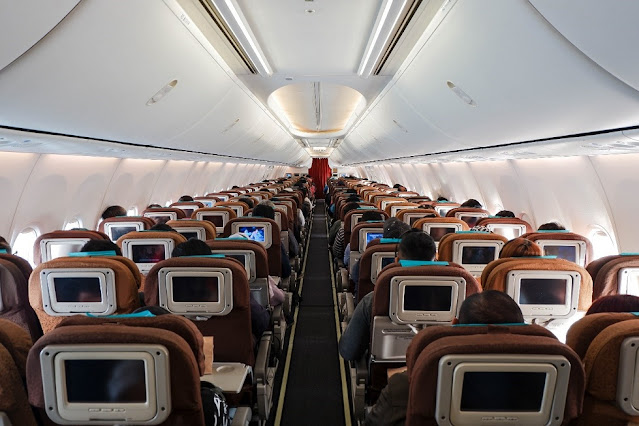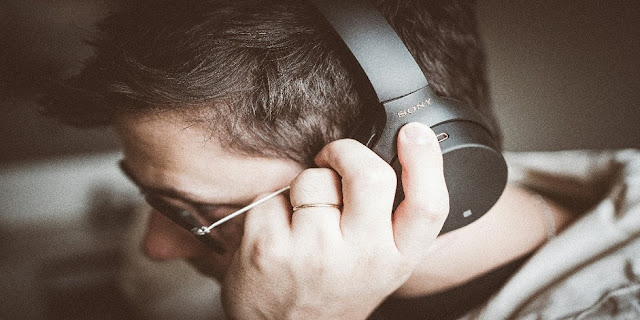It is not that long ago that mobile sound meant a boombox the size and weight of a very full suitcase, and music so loud you could entertain, or annoy, the entire neighborhood. But in 1979 the Walkman appeared, and with it, the idea that listening on the go was a headphone thing.
Since then, much has changed, Cassette
turned into disc, Walkman into iPod and then eventually, your phone, but a pair
of good headphones and your music player still mean the same thing. Tunes on
the go, wherever you are. All those changes were revolutionary, but the one
that has arguably had the biggest impact was the introduction of noise cancelling headphones.
Think about listening to music on the
go. Whether it was a tape player, a CD or digital, no matter how great the
sound, you walk down a street with some roadworks going on, or someone set the
sound system too high at the gym, and most of what you hear is not the music
you are playing. But noise cancelling changed that. Suddenly, you could get
clarity, hear what you want to hear and clock the rest out.
From a Noisy Flight to Serenity
It began with mechanical noise
isolation, headphones and then in-ears that sealed themselves against the head
or ear canal to physically block sound transmission other than from the
speakers. They used foam or soft gel to achieve this, and you can still find
them out there today. Performance was OK, and they did offer a better
experience, but things really changed when active noise cancellation became
possible in lightweight, easily transportable headphones.
Suddenly a different world opened,
where electronic systems controlled how much of the exterior sound was let in,
from everything to nothing. This brought with it a dramatic shift in the
listening experience for anyone in a noisy environment. Whether on the go or in
a shared office, suddenly you could hear the music, video call, podcast or
recording you needed, no matter what was going on around you.
The first ever noise cancelling
headphones of this type were the Bose Aviation Headset, released in 1989.
Designed for pilots, they used the microphone system that is at the heart of
almost all noise cancellation systems today. They were developed by Amar Bose,
the founder of the company that bears his name, and the idea came to him after
a long 8-hour flight where he couldn’t hear his music due to the cabin sounds
being too loud.
The Magic Behind Noise Cancelling Systems
What Mr. Bose developed was the basis
for all modern active noise cancelling systems. While many modern versions have
expanded the capabilities dramatically, and are much more effective, the ANC
system remains the blueprint.
The systems use microphones placed on
the ear cup, capturing the ambient noise. The system then generates an inverse
of that sound, so the soundwaves cancel each other out, leaving you with just
the sound coming from your headphone speaker, whatever it is you are listening
to. This basic system has been extremely successful since its 1989 launch, but
modern technology has transformed performance and capability.
The latest systems use microphones
both inside and outside of the earphone to monitor all sounds and uses AI
driven algorithms to eliminate undesired noise. This approach allows for
various modes, including the ability to allow voices through while eliminating
other external sounds, so you can carry on a conversation and avoid other
environmental sounds.
This has been an invaluable tool for
autistic people who suffer from auditory overload. It means they can be in
challenging environments such as concerts or sports events, block out those
sounds and still talk to those around them. It is also beneficial in many
situations, for instance on a flight you will hear announcements without having
to listen to the general noise in the cabin.
Affordable Silence
Perhaps the part of this revolution
that has really changed how we listen is the cost of all this technology. The
original Bose Aviation Headset and the subsequent military version made for the
US Airforce were extremely expensive even for the time and designed for a very
specific application. Even a decade ago, active noise cancellation was a
relatively rare feature only found on the most expensive products.
But today, you can find active systems
on headphones costing less than $50. More impressively, AI powered systems with
all that flexibility from around $100.
Noise Cancellation is for all
Whether you are wanting headphones to
listen to your favorite podcast on the train, for some high tempo music as you
run, or need help with auditory overload in a loud environment, you can have
great sound, exceptional noise cancelling performance and more, all for less
than the cost of the battery on that original Bose release.
Sometimes technology makes things
better and more affordable, as we were told it would. Noise cancelling is one
of those times. Technology today has transformed the capabilities of noise
cancellation and turned affordable headphones into something more.
While noise isolation means you can
hear music more clearly than ever, increasing enjoyment, it is the benefits for
people with autism that really stand out. Allowing them to unlock the world
around them in a way that has simply been unavailable before, noise cancelling
headphones not only help us enjoy music more, but they are also genuinely
transforming lives.













.jpg)


0 Comments